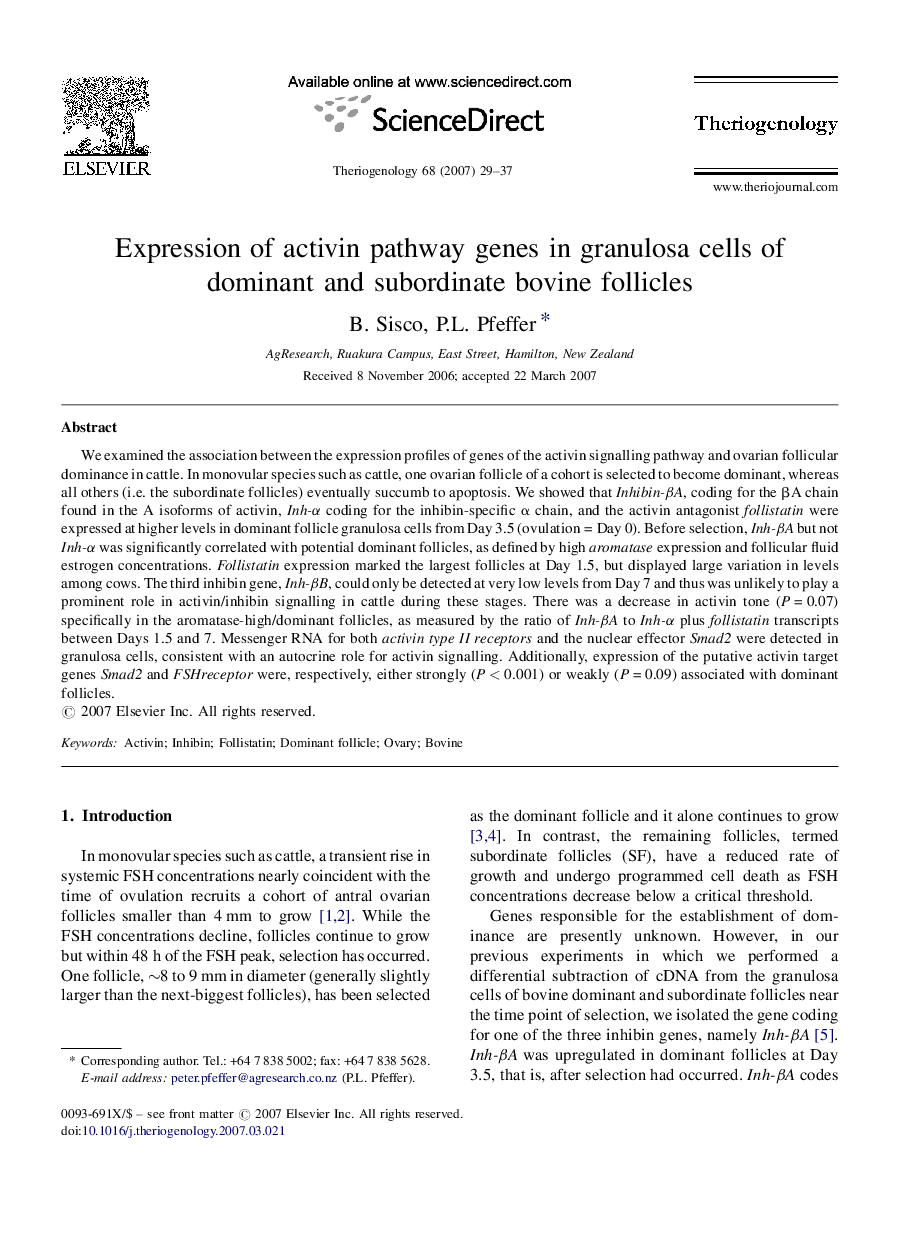| کد مقاله | کد نشریه | سال انتشار | مقاله انگلیسی | نسخه تمام متن |
|---|---|---|---|---|
| 2096396 | 1082165 | 2007 | 9 صفحه PDF | دانلود رایگان |

We examined the association between the expression profiles of genes of the activin signalling pathway and ovarian follicular dominance in cattle. In monovular species such as cattle, one ovarian follicle of a cohort is selected to become dominant, whereas all others (i.e. the subordinate follicles) eventually succumb to apoptosis. We showed that Inhibin-βA, coding for the βA chain found in the A isoforms of activin, Inh-α coding for the inhibin-specific α chain, and the activin antagonist follistatin were expressed at higher levels in dominant follicle granulosa cells from Day 3.5 (ovulation = Day 0). Before selection, Inh-βA but not Inh-α was significantly correlated with potential dominant follicles, as defined by high aromatase expression and follicular fluid estrogen concentrations. Follistatin expression marked the largest follicles at Day 1.5, but displayed large variation in levels among cows. The third inhibin gene, Inh-βB, could only be detected at very low levels from Day 7 and thus was unlikely to play a prominent role in activin/inhibin signalling in cattle during these stages. There was a decrease in activin tone (P = 0.07) specifically in the aromatase-high/dominant follicles, as measured by the ratio of Inh-βA to Inh-α plus follistatin transcripts between Days 1.5 and 7. Messenger RNA for both activin type II receptors and the nuclear effector Smad2 were detected in granulosa cells, consistent with an autocrine role for activin signalling. Additionally, expression of the putative activin target genes Smad2 and FSHreceptor were, respectively, either strongly (P < 0.001) or weakly (P = 0.09) associated with dominant follicles.
Journal: Theriogenology - Volume 68, Issue 1, 1 July 2007, Pages 29–37